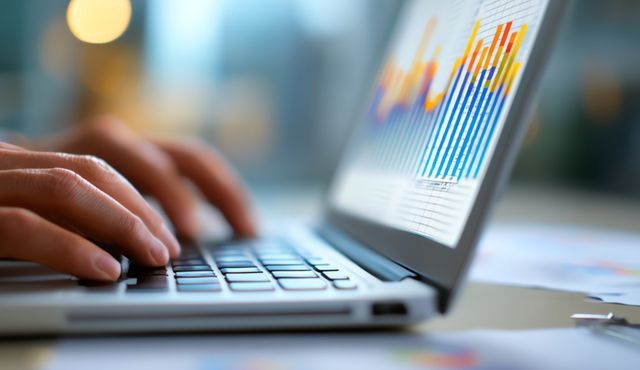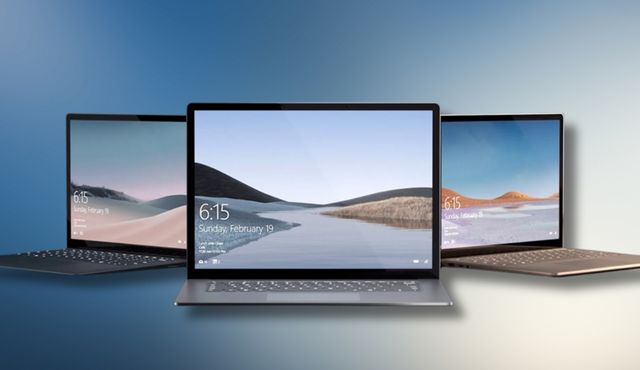Purchasing a refurbished laptop can save significant money while still providing reliable performance. However, knowing how to properly check seller refurbished laptops is crucial to avoid costly mistakes and ensure quality.
Inspecting refurbished laptop physically, verifying seller credibility through warranty policies, and testing software integrity reveal hidden defects before purchase.
This guide uncovers essential verification techniques that protect buyers from fraudulent sellers and disappointing purchases. Readers will learn systematic inspection methods, critical red flags to watch for, and expert strategies for evaluating battery health, hardware functionality, and seller reputation.
How to Verify a Refurbished Laptop Seller?
Choosing the right seller directly impacts the quality and reliability of a refurbished laptop purchase. Thorough seller verification establishes trustworthiness and reduces risk significantly.
Check Seller Reputation
Start by researching the seller’s track record through customer reviews and ratings on multiple platforms. Look for consistent positive feedback regarding product quality, accurate descriptions, and responsive customer service.
Reputable sellers typically maintain high ratings and provide transparent information about their refurbishment process. Avoid sellers with vague descriptions, no customer feedback history, or suspiciously low prices that seem too good to be true.
Certified refurbishers like Dell, HP, Lenovo, or Microsoft Authorized R2-certified vendors offer additional quality assurance through standardized refurbishment protocols.
Verify Return and Warranty Policies
A legitimate warranty signals that the seller stands behind their refurbished products. Look for warranties lasting at least 90 days to 12 months that cover hardware failures and unexpected faults.
Sellers offering minimal coverage or “sold as seen” terms present significant risk factors. Additionally, confirm a hassle-free return policy providing at least 14 days to test the laptop.
This protection allows returning devices that don’t match descriptions or develop immediate issues. Absence of clear warranty or return policies should raise immediate concerns about the seller’s credibility.
Ask About the Refurbishment Process
Quality refurbishers follow rigorous testing procedures that address hardware functionality, software integrity, and cosmetic restoration. Ask sellers to explain their specific refurbishment steps, including diagnostic testing, component replacement, and quality control measures.
Reputable sellers willingly provide detailed information about their process, including how they handle battery replacement, data wiping, and operating system installation. Vague or evasive responses about refurbishment procedures indicate potential quality issues or incomplete restoration work.
How to Inspect a Refurbished Laptop Physically?
Physical inspection reveals critical information about a laptop’s condition and previous usage. Systematic examination identifies potential problems before finalizing any purchase.
Exterior Condition
Examine the laptop casing thoroughly for cracks, dents, or significant scratches that might indicate rough handling or internal damage. Minor surface scratches are acceptable in refurbished devices, but deep dents or cracks suggest potential structural compromises affecting internal components.
Check all ports, hinges, and the screen bezel for integrity. Loose hinges or squeaky screens can be challenging and expensive to repair later. Pay attention to whether the device shows consistent wear patterns or isolated damage areas.
Screen and Display Quality
Test the display for dead pixels, discoloration, or backlight bleeding by viewing solid color backgrounds. Run the laptop through various screen tests displaying white, black, and primary color backgrounds to identify any display defects.
Check screen brightness levels and ensure uniform illumination across the entire panel. Inspect for scratches or cracks on the screen surface that might affect visibility or worsen over time.
Battery Health
Battery condition significantly impacts laptop usability and represents one of the most common wear points in refurbished devices. Use built-in diagnostic tools like Windows PowerShell command “powercfg /batteryreport” to generate detailed battery health information.
Review the battery’s design capacity versus current full charge capacity—health below 80% indicates significant degradation.
Check the cycle count, as most laptop batteries handle 300-500 cycles before noticeable capacity loss. On Mac devices, hold Option while clicking the battery icon to view condition status.
Key Hardware Checks
Verify all keyboard keys respond correctly without sticking or requiring excessive pressure. Test the trackpad for accurate cursor movement and functioning click buttons. Check all USB ports, HDMI connections, audio jacks, and card readers by connecting appropriate devices.
Run built-in hardware diagnostics available during system boot (often accessed by pressing specific function keys during startup) to verify RAM, storage drives, and other critical components function properly.
These checks are especially important when buying refurbished laptops with Intel or AMD processor options, as you want to ensure every part of the system performs reliably.
How to Verify Software and System Integrity?

Software verification ensures the refurbished laptop operates securely without hidden problems or unauthorized programs. Comprehensive software testing protects against malware and performance issues.
Operating System Validation
Confirm the operating system is genuine and properly activated rather than counterfeit or pirated versions. Check for a valid product key and licensing information through system settings.
Verify the OS version matches the current supported versions that receive security updates. Ensure no leftover personal data from previous owners remains on the system.
A properly refurbished laptop should have a clean operating system installation. Update the system completely to confirm that all drivers and security patches are installed correctly.
Check for Malware or Pre-installed Unwanted Programs
Even wiped systems occasionally retain malicious software or bloatware, affecting performance. Run comprehensive antivirus scans using reputable security software immediately upon receiving the device.
Review installed programs and remove any suspicious or unnecessary applications. For maximum security, consider performing a factory reset yourself or a clean OS installation to guarantee the complete removal of previous user data and potential security risks.
Run Benchmark and Performance Tests
Execute performance benchmarks to verify that the laptop meets expected specifications for its model. Use tools like Windows System Information (msinfo32) or Mac’s About This Mac to confirm RAM, processor, and storage specifications match advertised details.
Run stress tests on the CPU and GPU to ensure thermal management works properly without overheating. Test storage drives health using diagnostic utilities that check for bad sectors or excessive wear on SSDs.
Red Flags to Avoid When Buying Refurbished
Certain warning signs indicate problematic sellers or defective devices. No warranty or extremely limited coverage suggests the seller lacks confidence in product quality.
Suspiciously low prices without a clear explanation often indicate hidden defects or incomplete refurbishment. Vague product descriptions lacking specific condition details or relying solely on stock photos rather than actual device images raise authenticity concerns.
Sellers refusing to provide the actual device serial number prevent verification through manufacturer warranty databases. Missing original accessories like chargers may indicate incomplete refurbishment or non-original replacement parts.
Devices showing signs of liquid damage, extensive physical damage, or previous failed repairs present a high risk.
Tips for a Safe Refurbished Laptop Purchase
Smart purchasing strategies maximize value while minimizing risk when buying refurbished laptops. Always buy from certified refurbishers or manufacturer-refurbished programs offering standardized quality assurance.
Compare specifications carefully against original model details to ensure no component downgrades occurred during refurbishment. When evaluating options to sell an old Dell laptop or similar brands, understanding proper valuation helps appreciate fair refurbished pricing.
Request actual photographs of the specific device rather than stock images whenever possible. Document all communications with sellers regarding condition, warranty, and return policies.
Test the laptop thoroughly immediately upon receipt during the return window. Consider purchasing extended warranty coverage for additional protection beyond standard terms.
Research market prices for similar refurbished models to identify reasonable pricing. For those interested in second-hand electronics markets, applying these verification methods ensures quality regardless of purchase source.
Frequently Asked Questions
What warranty should a refurbished laptop have?
Quality refurbished laptops should include a minimum 90-day warranty coverage, though reputable sellers often provide 6-12 month warranties. Manufacturer-refurbished devices typically offer longer warranty periods than third-party refurbishers. Warranty should cover hardware failures and functional defects, not just cosmetic issues.
How can I check battery health on a refurbished laptop?
Windows users can generate battery reports using the “powercfg /batteryreport” command in PowerShell. Mac users hold Option while clicking the battery icon for condition details. Battery health above 80% of design capacity indicates an acceptable condition for refurbished devices.
Are refurbished laptops from manufacturers better than third-party refurbishers?
Manufacturer-refurbished laptops generally offer more consistent quality through standardized refurbishment processes and original replacement parts. However, reputable third-party refurbishers with proper certifications can provide excellent quality at competitive prices. Always verify seller credentials and warranty offerings regardless of refurbisher type.
Can I trust refurbished laptops sold online?
Online refurbished laptop purchases are trustworthy when buying from established retailers with verified customer reviews, clear return policies, and comprehensive warranties. Research seller reputation thoroughly, verify refurbishment certifications, and ensure purchase protection through secure payment methods and documented terms.
Make Confident Refurbished Laptop Decisions
Checking seller refurbished laptops requires systematic verification of seller credibility, physical condition, software integrity, and warranty protection. Applying these comprehensive inspection techniques empowers buyers to identify quality devices while avoiding costly mistakes.
Thorough evaluation before purchase ensures refurbished laptops deliver excellent value, reliable performance, and satisfactory long-term ownership experiences.



4 Responses
Hi, after reading this remarkable post i am also glad to share my experience
here with friends.
Here is my web-site :: راهنمای خرید لوازم یدکی
Развлечения для взрослых доступен через безопасные и авторитетные веб-сайты.
Изучите надежные платформы для получения качественного контента.
Take a look at my webpage :: lesbian porn videos
For tһе reason tһat the admin of this website is working,
no question veгү soon it wilⅼ be well-known, due to itss quality contents.
Ꮇy web blog :: andractim buy online usa with discreet shipping
Great guide! One thing I’d add is checking if the laptop’s firmware is up to date. Outdated firmware can sometimes cause issues, even if the refurbishing is done well. It’s worth verifying before finalizing the purchase.